Post by dom on Dec 9, 2007 18:02:02 GMT
I'm making a bench to match a table which was made a little while ago.
The client is a friend so I asked if he would mind if I used an unorthodox method of joinery as a test.
The bench will be in their kitchen( two adults and two teenage sons) so plenty of use.
As you've probably guessed I'll be using the Festool Domino and Beech Domino biscuits the timber is European Oak.
Finish will be a caustic soda wash and then Morrells wax.
A review of how I got on with the Domino on it's first serious outing is sort of built into the project.
First the cutters
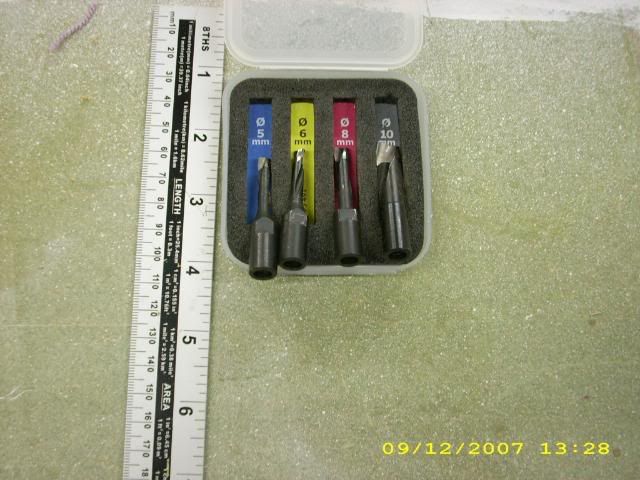
I used the 10mm cutter and 10mm by 50mm biscuits.
Changing the cutters is not unlike a router. The body of the machine is removed by inserting the spanner in a lock and lifting
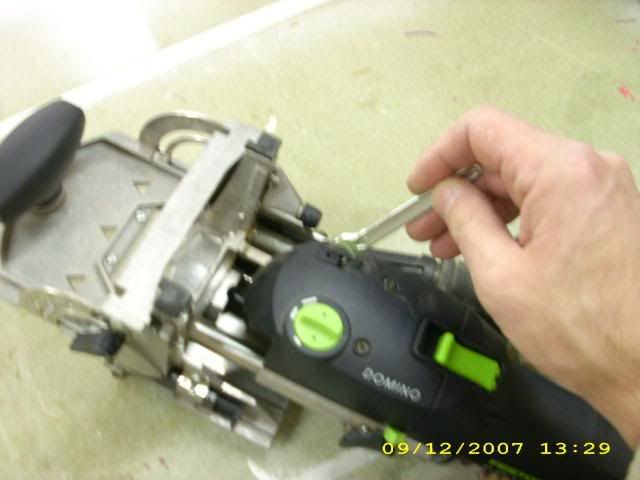
Then the same spanner turns the cutter holder as a button on the side of the machine is depressed

The height of cut can be adjusted millimetrically so as to get the cutter dead centre
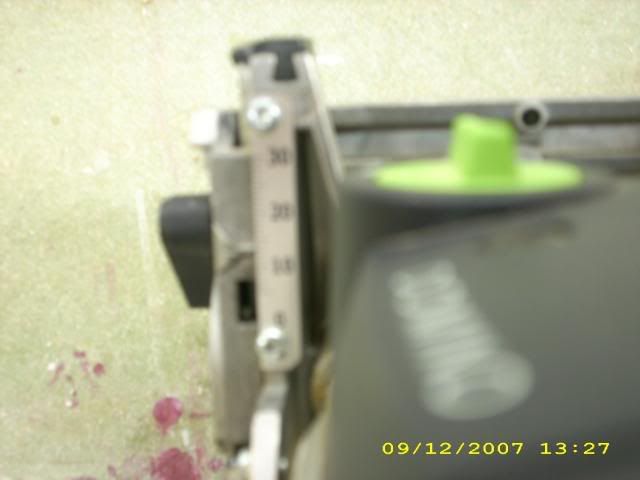
Or by the presets, which seem to be rather random numbers and would not correspond to the centre of any man made boards
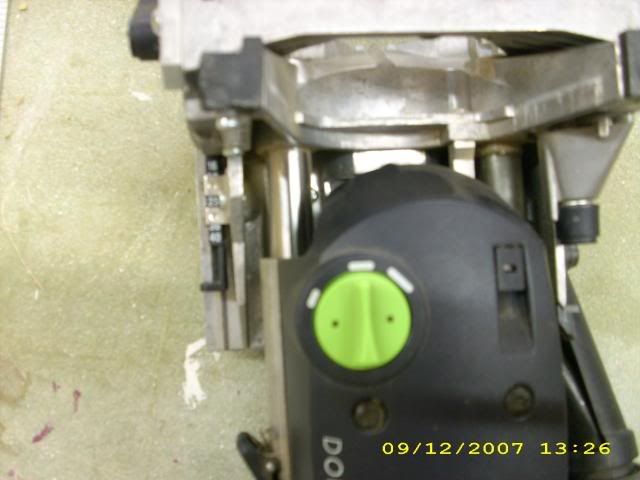
The above picture also shows the adjuster for Domino width, the smallest is an exact width, the second , width +2mm each side of the domino and the third, +5mm either side of the Domino.
For the mortices on the legs I will use exact size but to join the two pieces for the seat a sloppy fit is preferable to allow for adjustment.
The biscuits come in sizes which range from 5mm by 20mm to 10mm by 50mm they are also ridged so the glue is not squeezed out when inserting
Depth of cut is adjusted on the side of the machine
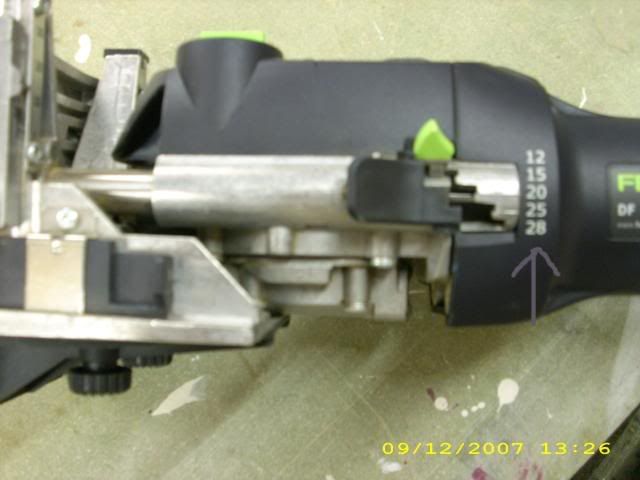
The depths are deliberately 2mm over to allow room for glue.
The boards
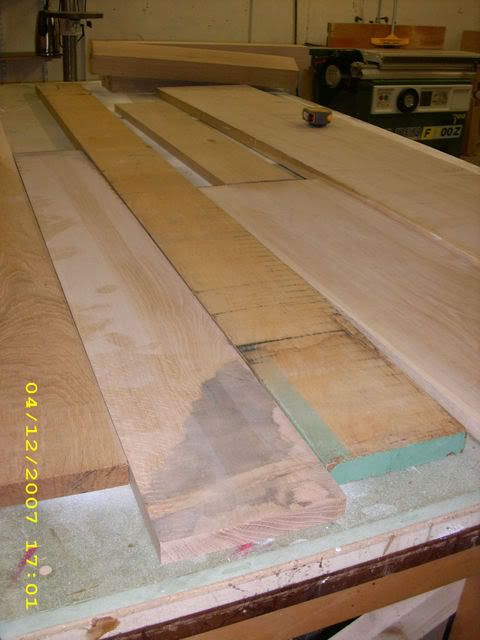
Cutting to size
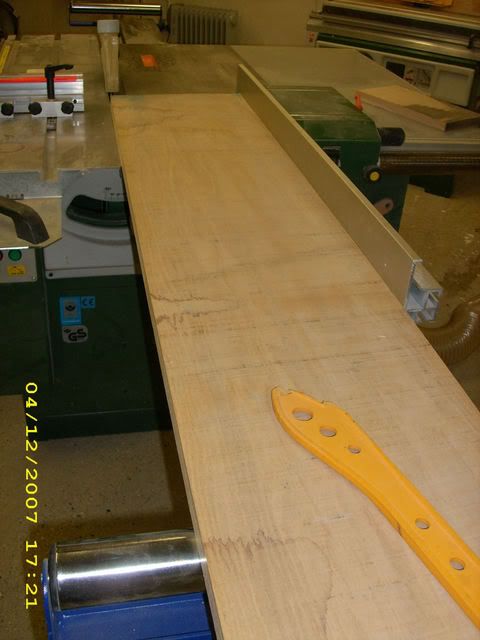
Joining the two boards for the seat.
There is no need to mark up because the accessory wings allow you to use the first hole you make as a reference by inserting the metal stud shown into the hole.
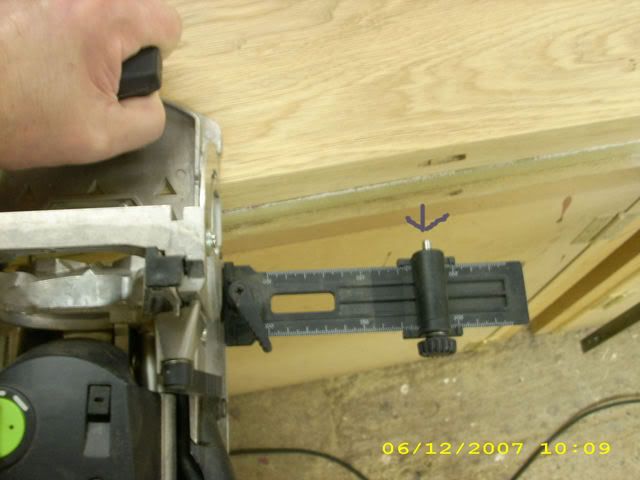
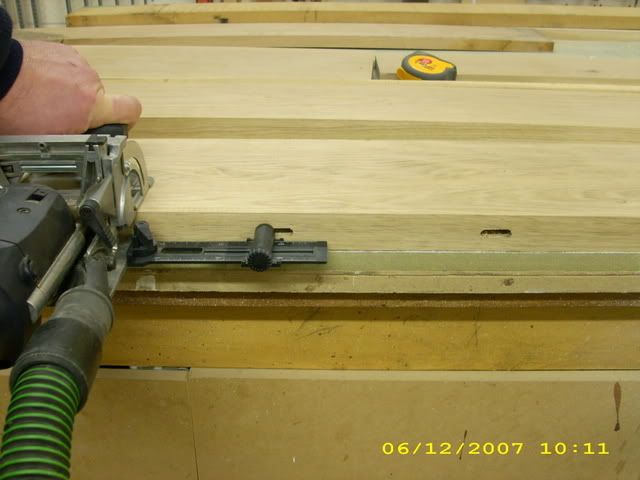
No need to allow for length of tenons when cutting, just cut the lengths you want and test size
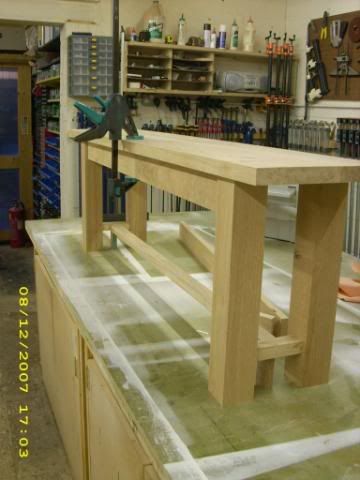
Next cut slots for the bottom rail, with a normal biscuit jointer this could be awkward but Domino have a solution, another accessory, which holds the wood between two jaws.
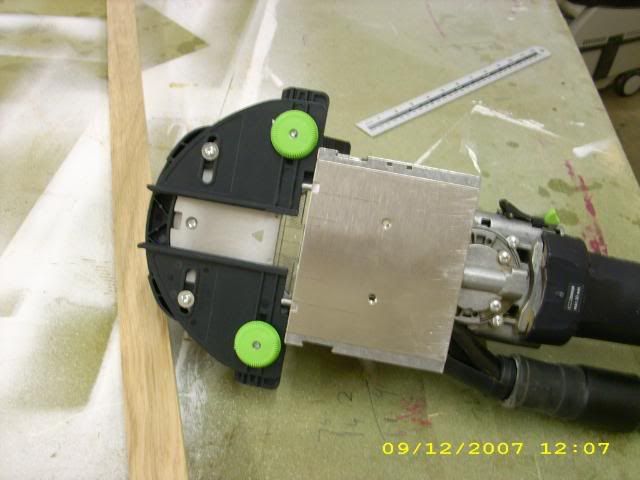
You adjust each side of the jaws with the metric slides for a precise centre cut
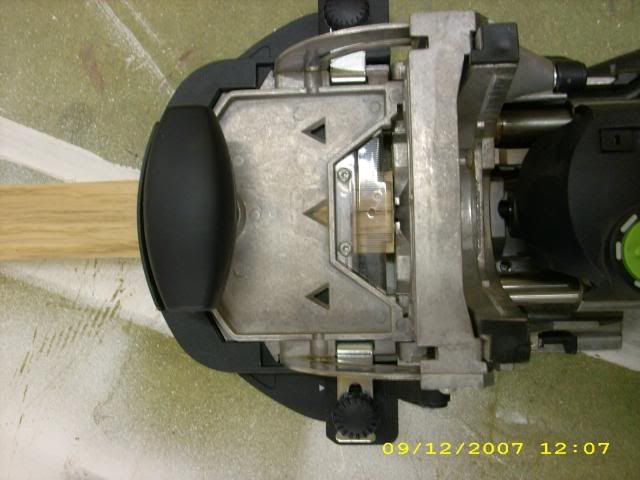
First mistake, I forgot to adjust for the height.
I think though that to achieve that cut with a biscuit jointer would be not only difficult but the cutter would cut off the edge.
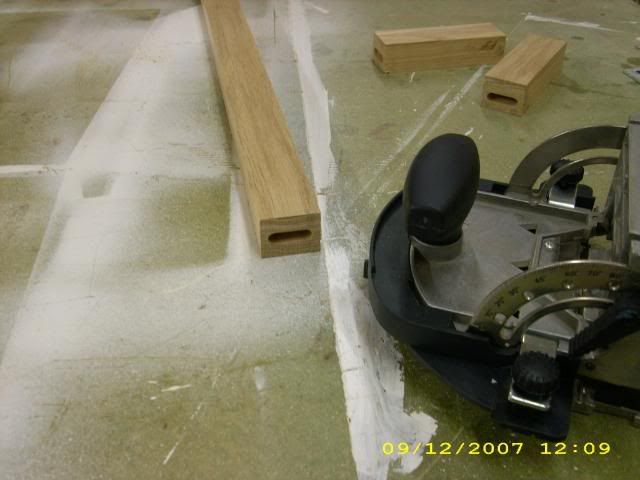
When cutting the mortices on the legs and rails, again no marking, there are so many reference points on the machine that you need only adjust height of cut to achieve an instep on the leg.
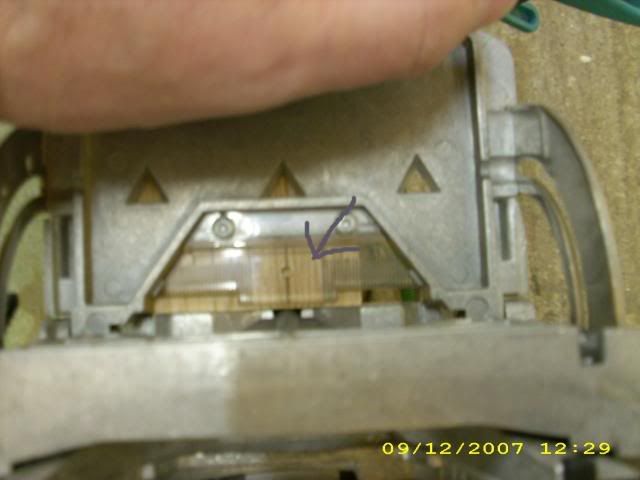
You can also use the machine to make slots for the seat buttons, there is yet another accessory to enable the Domino to be used on the thin edge of a board
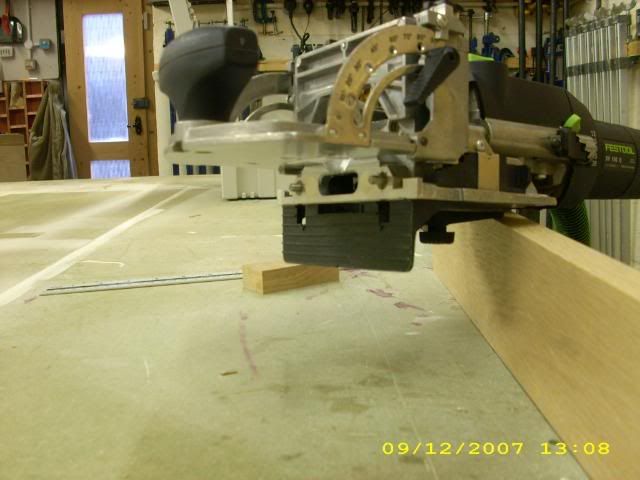
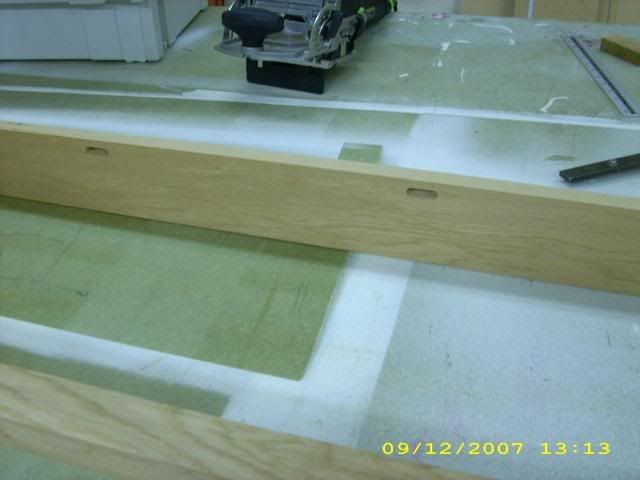
The buttons can be made using the Domino biscuits
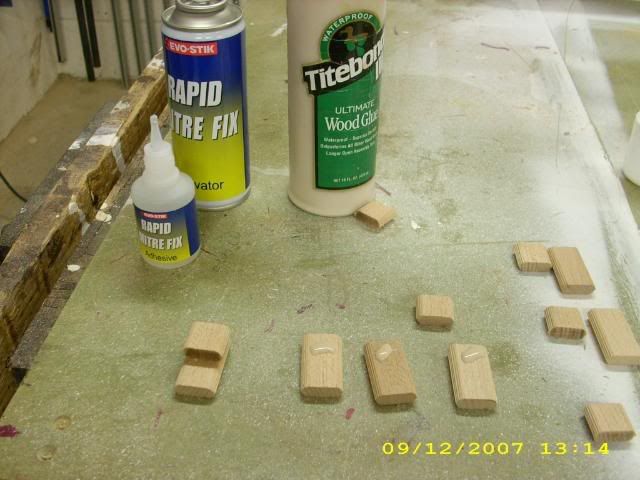

16 double tenons made in about 10 minutes
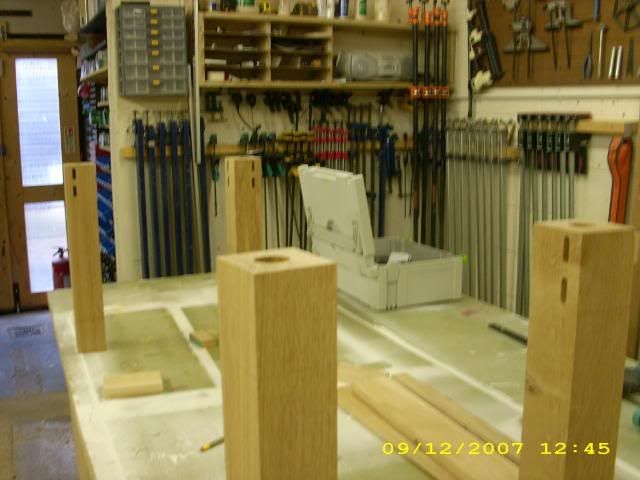
Dry fit and perfect joints
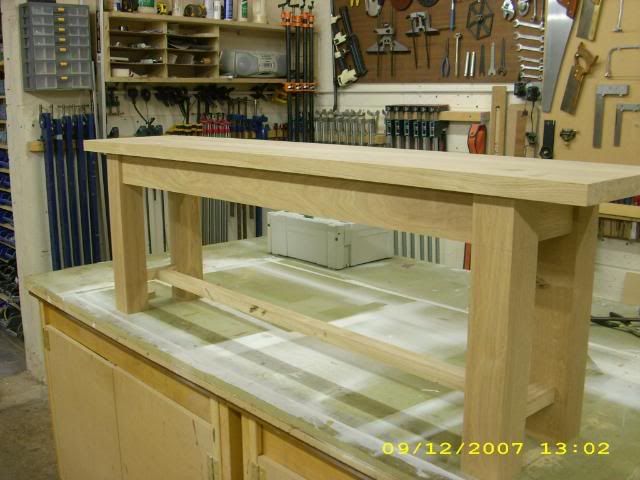
All that's left now is gluing up, sanding, rounding over and finishing I'll add those pictures soon.
I don't think that the tenons in a 1" mortice will be strong enough, but I will be adding dowels, time will tell.
Couple of gripes, the presets for board thickness are pointless for man made boards, I guess if you intend to use the tool a lot then you could machine your wood accordingly, which is what I did, in fact you don't have much choice because if you don't use the presets the millimetric adjuster doesn't hold it's position under pressure.
Secondly, the number of accessories you have to buy to utilise the full capacity of the machine is somewhat annoying and expensive.
The client is a friend so I asked if he would mind if I used an unorthodox method of joinery as a test.
The bench will be in their kitchen( two adults and two teenage sons) so plenty of use.
As you've probably guessed I'll be using the Festool Domino and Beech Domino biscuits the timber is European Oak.
Finish will be a caustic soda wash and then Morrells wax.
A review of how I got on with the Domino on it's first serious outing is sort of built into the project.
First the cutters

I used the 10mm cutter and 10mm by 50mm biscuits.
Changing the cutters is not unlike a router. The body of the machine is removed by inserting the spanner in a lock and lifting

Then the same spanner turns the cutter holder as a button on the side of the machine is depressed

The height of cut can be adjusted millimetrically so as to get the cutter dead centre

Or by the presets, which seem to be rather random numbers and would not correspond to the centre of any man made boards

The above picture also shows the adjuster for Domino width, the smallest is an exact width, the second , width +2mm each side of the domino and the third, +5mm either side of the Domino.
For the mortices on the legs I will use exact size but to join the two pieces for the seat a sloppy fit is preferable to allow for adjustment.
The biscuits come in sizes which range from 5mm by 20mm to 10mm by 50mm they are also ridged so the glue is not squeezed out when inserting
Depth of cut is adjusted on the side of the machine

The depths are deliberately 2mm over to allow room for glue.
The boards

Cutting to size

Joining the two boards for the seat.
There is no need to mark up because the accessory wings allow you to use the first hole you make as a reference by inserting the metal stud shown into the hole.


No need to allow for length of tenons when cutting, just cut the lengths you want and test size

Next cut slots for the bottom rail, with a normal biscuit jointer this could be awkward but Domino have a solution, another accessory, which holds the wood between two jaws.

You adjust each side of the jaws with the metric slides for a precise centre cut

First mistake, I forgot to adjust for the height.
I think though that to achieve that cut with a biscuit jointer would be not only difficult but the cutter would cut off the edge.

When cutting the mortices on the legs and rails, again no marking, there are so many reference points on the machine that you need only adjust height of cut to achieve an instep on the leg.

You can also use the machine to make slots for the seat buttons, there is yet another accessory to enable the Domino to be used on the thin edge of a board


The buttons can be made using the Domino biscuits


16 double tenons made in about 10 minutes

Dry fit and perfect joints

All that's left now is gluing up, sanding, rounding over and finishing I'll add those pictures soon.
I don't think that the tenons in a 1" mortice will be strong enough, but I will be adding dowels, time will tell.
Couple of gripes, the presets for board thickness are pointless for man made boards, I guess if you intend to use the tool a lot then you could machine your wood accordingly, which is what I did, in fact you don't have much choice because if you don't use the presets the millimetric adjuster doesn't hold it's position under pressure.
Secondly, the number of accessories you have to buy to utilise the full capacity of the machine is somewhat annoying and expensive.











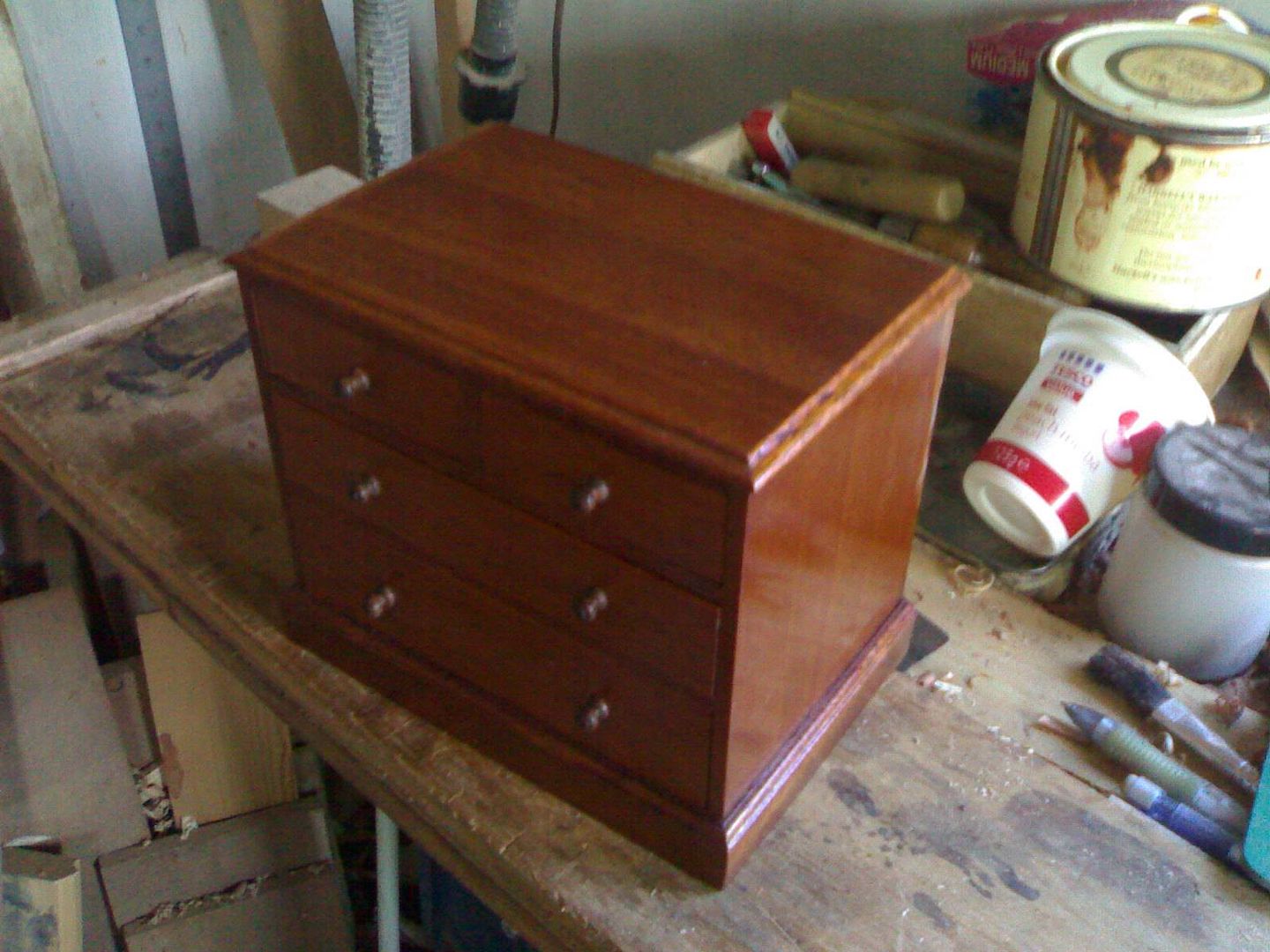

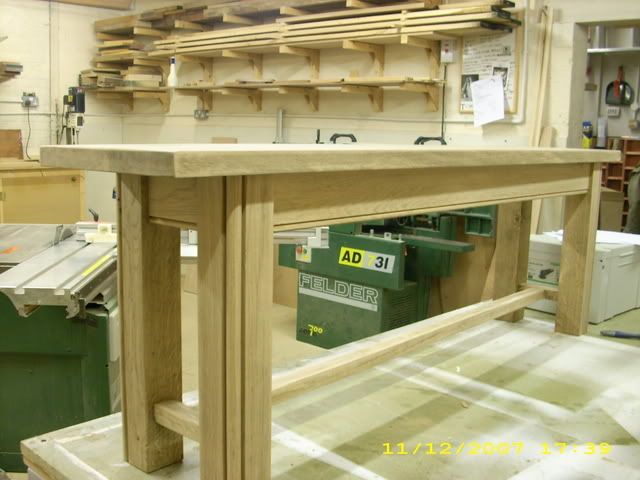
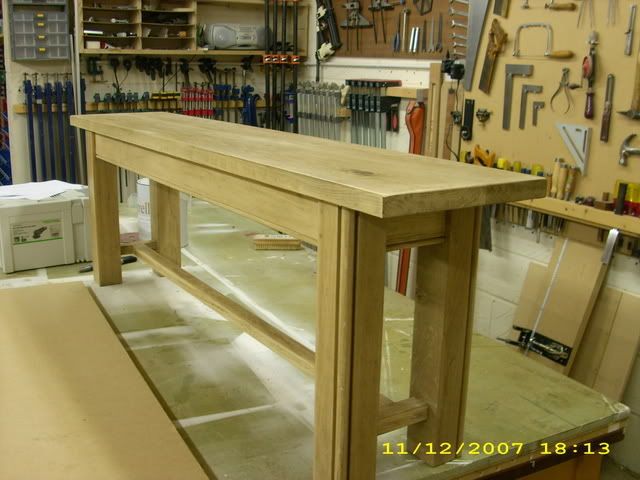
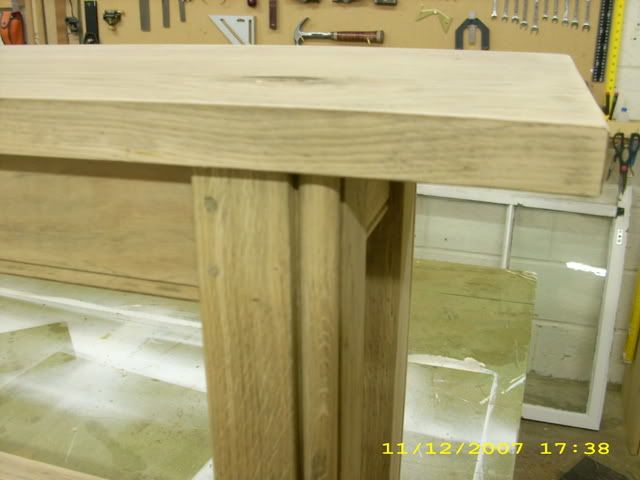


 ;D
;D
 ;D
;D